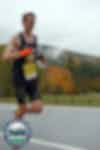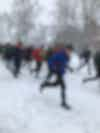February 2020 Newsletter
Note from the Editor
Welcome to the February 2020 edition of the Upper Valley Running Club newsletter! Keep your submissions coming — email newsletter@uppervalleyrunningclub.org.
Happy running!
Editor
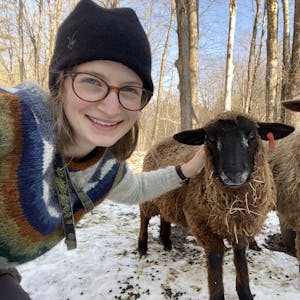
Amanda Kievet
Trail runner, wool mill owner, web developer, quote unquote farmer.
Article Collection
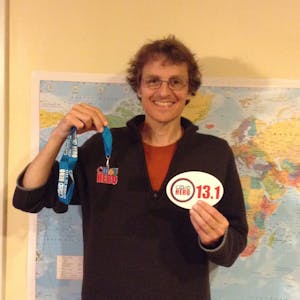
Geoff Dunbar
Former UVRC president, co newsletter editor, and UVRS coordinator.
Table of Contents
- Letter from a Board Member: The Quest for 1:20! by Geoff Dunbar
- Winter Social at Brookmead, Feb 22 by Amanda Kievet
- Upper Valley Running Series 2020 by Geoff Dunbar
- C25k Winter Workout by Erin Wetherell
- How To Plan Your Running Year by Tim Smith
- Upper Valley Running Club University and the Dartmouth Relays by Bill Young
- Wild Winter Wild by Ellie Ferguson
- 2020 Frozen Otter Ultra by Bruce Atwood
- Darrel Lasell by Scott King
- Ask the Coaches: Any tips on form while running downhill?
The Quest for 1:20!
By: Geoff Dunbar
When I saw that my name was on the list for “Letter From a Board Member” for this month’s newsletter, I had trouble coming up with inspiration for what to write. Something about how to get involved with the club? How to give back to running? I had all these virtuous ideas; only one problem: Boring! I didn’t want to write about that. So, since I’ve got a captive audience of newsletter readers, I decided to write about my favorite thing: my running! If you don’t want to read about my running, you’ll probably want to go ahead and skip to the next article.
So, without further ado:
The Quest for 1:20!
The one major goal that I’ve had as a runner that I have not achieved is the 1:20 half marathon. And, spoiler: Now that I’m 49 and definitely slowing down (in terms of pace only!), it’s never going to happen. I would even count 1:20:59 (6:10 pace) as a 1:20 half, though a stickler might insist on 1:20:00 or even 1:19:59 (6:06 pace).
Let’s start with the early years. I started running seriously when I was almost thirty (in 2000), coinciding with the birth of my first daughter and the need for a sport that didn’t have pre-set schedules or long time commitments. My early goal was to finish a half marathon (perhaps proceeding to marathons), which I achieved at the cost of serious IT-band issues. As that point I switched focus in an attempt to avoid injuries, focusing on running shorter races (5K/10K) faster. It turns out that to run fast, you need to run quite a bit, even if your race isn’t so long.
After about 10 years of this I was running 40 or 50 miles a week anyways, I started to eye the half marathon again. Looking around at the New Hampshire races, Nancy and I thought that the Smuttynose Rockfest Half Marathon, down in Hampton NH, would make a nice goal race for 2011. Based on my paces for other races that year, the 1:20 seemed like a pretty achievable goal on this flat, fast course. On race day, however, we were faced with driving rain, high winds, and it was not to be. I remember seeing Nancy at the finish with two jackets tied around her waist, as she was so miserable at the start that she didn’t shed any layers until much later when she heated up. Splits and results:
6:15, 6:23, 6:28, 6:13, 6:21, 6:11, 6:24, 6:17, 6:20, 6:25, 6:14, 6:11, 7:03, total 1:22:51. 11/1789 overall, 1/93 age group.
I see a lot of miles in the 6:10 range, but when the wind kicked up and the rain became a deluge, running that fast was not possible for me.
Encouraged by the Smuttynose performance, I wanted to take another shot in 2012. First up was the Wallis Sands Half Marathon, a race in the New Hampshire Grand Prix series. Wallis Sands is down on the Seacoast, so flat and fast, but the race was in May. I was planning this race as a tune-up for a real shot at Covered Bridges in June (next paragraph!), because I didn’t think I’d gotten enough serious training that early in the season. Then the race started, and I was absolutely crushing it! Here the splits are:
6:14, 6:13, 6:12, 6:11, 5:59, 6:08, 6:19, 6:14, 5:51, 6:01, 6:00, 6:17, 9:05, total 1:22:49. 9/821 overall, 2/36 age group.
“What about that last mile”, you ask, “Crash and burn, huh?” Actually, no: all of the mile markers in the race were just a little short (and I didn’t have a GPS watch)! So the last “mile” was actually almost a mile and a half, and I had been running 6:20 miles all along.v
The start of the Wallis Sands half. I ended up running with hot-pink guy most of the race. He’s a triathlete, seemed like a nice guy.
Next up was June 2012, the Covered Bridges Half Marathon. I was in great shape for this race, training well, and the pretty flat, downhill course should be perfect. 1:20 here I come! Splits and results:
6:04, 6:04, 6:13, 6:08, 6:07, 6:23, 6:13, 6:32, 6:20, 6:30, 6:20, 6:34, 6:18, 1:06, total 1:23:00. 8/1823 overall, 2/131 age group.
If you look carefully, you’ll see I was on pace for 1:20 through about mile 8. At that point, the course has a steep uphill, and then the sun came out and the humidity rose. I was still running well (and passing people), but conditions were not ideal for a fast finish. So, another miss. Also, in a developing theme, I was actually 2nd in age group (40-49) but awarded first because the overall winner (Hi Rich!) was in my age group. Winning a big half marathon at 40 is a very impressive achievement, and I am always humbled by Rich Smith.
Covered Bridges Finish.
Fall 2012 we have a little detour. I was in peak fitness, I think the fastest I’ve ever been. However, the fall NHGP race that year was not a half marathon. It was the Granite State 10 Miler, a hilly 10 mile race in Concord. I ran really strong, a 1:00:41, 6:04 pace. That is the day I would have run a 1:20 half marathon if it had been a flat course with good weather. I had a great race, though, so no regrets.
UVRC makes the Valley News for the Granite State 10 miler.
My next shot was fall 2014, the CHaD half marathon was the concluding race in the NHGP. I’m not a particularly strong hill runner, though, so there was no way. See Strava for splits:
https://www.strava.com/activities/212072099
Results: 1:26:42, 14/786 overall, 3/69 age group.
I did not have a strong finish with the hilly last 5 miles of the race. I didn’t completely blow up, but it felt like it. Ugh.
2015 was a really special running year, both for myself and for the club (more on that below). First up, the schedule worked out well, so I decided to take another shot at Covered Bridges. This day, it was perfect running weather, cooler and less humid than last time. You can see my splits on Strava:
https://www.strava.com/activities/320485271
Very steady pace (except slow mile 8 with the hill), strong finish. Results:
1:23:14, 12/1948 overall, 1/118 age group.
I have very fond memories of this race. The problem is, at 44, even “fit” me was going to have trouble getting down to the 1:20 barrier. Side note: Kudos to Rich Smith with another overall victory at age 45!
Then, fall 2015, the final race of the NHGP was the White Mountain Milers Half marathon in Conway NH. Despite the name, this is a pretty flat and fast half, through the town of Conway. If you look at my Strava splits:
https://www.strava.com/activities/420298758
The first 4 miles were around 6:30 pace, with a decent headwind. I remember running this part with Rob Edson, and trading off leading to cut the wind a little bit. After 4 miles, the course turned away onto a country road out of the wind, and conditions were perfect. For the next few miles, I remember feeling great, “The next mile marker already? Wow, another 6:15 mile!” Results:
1:23:05, 13/416 overall, 2/25 age group.
This was a great race for me, and made better because this race was the capstone of UVRC’s NHGP winning season, the first time we ever won the series. But, at age 45, running a near-perfect race only got me a 1:23 half. The 1:20 dream was dead.
Sadly, following the 2015 season, my old IT band issues flared up again, and I haven’t been able to put in the training to really excel at the 13 mile distance. In fact, I’m finding it better not to race half marathons at all; serving as a pacer is also rewarding, and much easier on my body. I might well race another one in the future if my training goes well, but the finish time will never be as low as in the good old days.
So, the quest has failed. That said, while running a 1:20 half was a goal, I’ve overstated the importance in this article. It would have been nice if it happened, but I have gotten immense satisfaction from the training, racing, and all of the running I’ve done for the last 20 years. I’ve had (and have!) many goals in running, and my main goal has always been to be the best of myself, doing something that I love. Running has definitely fit that desire, and will continue to do so for years to come (knock on wood).
Postscript, for the other middle-aged plus folks out there; you know what I’m talking about… it’s age grading time! If you take the WMA age grading calculator, my 1:23:05 at age 45 comes out to a quite respectable (for me) 77.3%. Turn the knobs back to age 40, and a 77.3% age grade is: A 1:19:49 half marathon! So, mission accomplished?
Winter Social at Brookmead, Feb 22
By: Amanda Kievet
Those of you who have been a part of the club for a while know that our social calendar is back-loaded with the annual picnic, banquet, and Jingle Bell Run toward the second half of the year. We thought it’d be fun to do something fun before race season picks up so we’re hosting a club social in February! Join us for some winter fun on Saturday, February 22nd for snowshoeing, trail running, a rustic cabin experience, and fun times at Brookmead Conservation Area in Norwich.
Details
When: Saturday, February 22nd from noon until 4pm
Where: Brookmead Conservation Area in Norwich, VT (map here)
What: Hike up to the cabin in the woods ~1/2 mile from the parking area, enjoy miles and miles of trails via hiking, running, or whatever trail sport you get up to. There’s a ~5k loop from the cabin that could be fun to run/hike with options for further exploration into Parcel 5/Blue Ribbon trail systems. We’re keeping this one casual, but we will have some hot cocoa at the cabin and a space to get out of the conditions. There’s no heat or electricity so come prepared for the elements.
See you there!
Upper Valley Running Series 2020
By: Geoff Dunbar
Congratulations to everyone who ran the RedZone 5K in Wilder VT on Super Bowl Sunday, February 2nd. As part of the festivities, we announced the lineup for the 2020 UVRS. Without further ado, here it is:
Shamrock ShuffleLebanon NH3/145KSpringfield Dam RunSpringfield VT4/254MTuck Run for VeteransHanover NH5/165KSkip’s RunLebanon NH6/214MRed, White, and Blue 6.2Lebanon NH7/45K/10K**Run With the LawCanaan NH8/25KThe SproutySharon VT9/125K/10K**Tiger RunEnfield NH10/255K/12K**
You can get more information about the Upper Valley Running Series here:
http://uppervalleyrunningclub.org/2020-upper-valley-running-series/
Including instructions for how to register for the whole series.
C25k Winter Workout
By: Erin Wetherell
On Saturday mornings since late December, Scott King has been leading stretching and strength-building exercises at the CCB in Lebanon for any UVRC members who are interested. With an eclectic mix of music ranging from Madonna to Burt Ives to the Village People, Scott patiently guides the group through calisthenics, stretching, and strength-training exercises, with only the occasional grumble from participants (myself excluded, of course ).
It’s a sight to behold, watching Scott trudge from his car with speakers, foam rollers, mats, weights and stretchy bands every week! We appreciate his time volunteering in this role, and we hope that others will join this fun and supportive group. For those who run at 9am, this would be a wonderful way to warm-up! Come join us for the workout— but even more importantly— for coffee and breakfast sandwiches at Lucky’s afterwards. #priorities
How To Plan Your Running Year
By: Tim Smith
If I know anything about runners it is that they are always looking into the future and imagining the Next Great Race. That is the race where their training will converge on the day of perfect weather and the competition will be at its strongest, but still two strides behind.
What runners are not good at is seeing clearly all the miles between today’s jaunt and that Next Great Race. Thus the reason for this informational session
What: How To Plan Your Running Year: Information & Answers
Speakers: Dorcas DenHartog & Tim Smith – UVRC’s coaches
When: Tuesday, Feb 25, 7:00-8:00pm
Where: Howe Library, Meyer Room (lower level), Hanover
We will be talking about planning your running year, starting with identifying running goals and goal races (which don’t have to be the same thing). We will talk about “macrocycles” (the season long cycles) and “microcycles” (weekly cycles) and describe why we train in different ways.
Running consists of hard days, easy days, recovery days and rest days. We have interval workout and repeat sessions. We run threshold paces and marathon paces. And when we can, we cross-train.
There are people who are obsessively guided by heart-rate monitors, those who follow their VO2-max, and those who run as the muses lead them. There are “Tempo” runs, hill runs and “Long Slow Distance” (LSD), all of which serve a real purpose.
This can be a bit overwhelming, and most certainly confusing. So how does one decide, while lacing up your winged-running shoes, what are you doing today? Does it really get you ready for that Next Great Race?
Come and join us and we will try to demystify the gentle art of training.
And bring all your questions!
Upper Valley Running Club University and the Dartmouth Relays
By: Bill Young
Jim Burnett, the bell lap ringer is all business during the Dartmouth Relays. He volunteered for all three days. UVRC shirts on volunteers he recruited were frequently seen around the track and field event locations. Sara Vannah was wearing a UVRC singlet as she rounded the track 15 times in the 3,000 meter race. The UVRC was a presence and the Dartmouth Track and Field coaches love our club.
Wild Winter Wild
By: Ellie Ferguson
And off we go again for Wild winter fun at Winter Wild.. 2 already In the books with Magic Mountain 2 weeks ago and Crotched Mountain yesterday. With Brandon Baker magic going, the temps were not too bad at race time and again at Magic for the second year in a row the rain stopped for the race… Race reports for Brandon revealed several course changes during the week preceding Crotched due 1. no snow. 2. then snow. 3. then crazy snow… Well, what do you expect.. This IS New Hampshire. The new twist this year is there is a snowshoe division this year. While I can not take credit for instigating it I am taking advantage. Since I’ve been doing Winter Wild on snowshoes since the first one at Whaleback 11 years ago, I’m good with it. Especially since I so far have been the only little old lady doing it on snowshoes.. and a broken foot to boot.. Living the dream…..
2020 Frozen Otter Ultra
By: Bruce Atwood
I had a glimmer of hope about finishing the Frozen Otter this year, but alas the weather defeated me. The Frozen Otter is a 64-mile ultra run held in January along the Ice Age Trail in the Northern Unit of the Kettle Moraine State Forest in Wisconsin. There is a 24-hour time limit to complete the race, and there are additional time limits at checkpoints, approximately 8 miles apart, along the way. Water and snacks are available at the checkpoints, but otherwise the race is unsupported. Thus everyone must wear a pack with food, extra clothing, cell phone, and other gear such as microspikes and trekking poles.
Historically the “frozen few” finish rate is less than 20%: in 2019, there were 33 finishers out of 127; and in 2018, 40 out of 124 completed the race. Last year I made it 46 miles when I stopped about 2am. The previous year I only made it 32 miles, and the year before that I paced a friend for 23 miles. This year I incorporated much more hiking into my training, which I built up to 50 miles per week of combined running and hiking. I’ll have to admit that discovering the Dunkin Donuts for munchkins and hot chocolate at 8 miles out on the Northern Rail Trail gave my training a significant boost.
The forecast of temperatures dropping into the single digits with winds over 20 miles per hour was very close to the minus 20 wind chill that would trigger the requirement to carry extra extreme weather gear. It may not sound like a lot to carry a sleeping bag and bivy sack, but every extra pound slows you down. We were glad that extreme gear was not needed, but we all knew the weather conditions were going to be tough this year at the Frozen Otter. And, sure enough, in the end, only 5 people finished out of 112 participants.
So what happened this year? We woke up to 6 inches of new snow on top of the 4 inches already on the trail. At the 10 am start the temperature was 31 degrees with a 12 mph wind. I expected very soft conditions and decided that microspikes would not give enough additional traction to be worth their weight. Thus I left them in my drop box which could only be accessed at 46 miles. I was wrong though as the wet snow packed down into a hard slippery surface for the first 5 miles, but I don’t think this mistake made much of a difference in my pace.
The temperature decreased and the wind increased all day. For the first 16 miles I was moving along slowly but steadily. I realized that I might eventually have trouble with the time cutoffs, but I paced myself by effort not time since I was planning for a very long day. As the packed down trail began getting drifted over and very soft, I began to slow dramatically. I hadn’t been using my trekking poles since I was saving them for later when I knew I would really need them. In retrospect I should have gotten them out at this point.
By 7 pm the temperature had dropped to 14 degrees and the wind had picked up to 22 mph making for a minus 5 windchill. I planned to change socks, change to thicker baselayers, warmer gloves, and balaclava at the mile 23 checkpoint. Unfortunately I rolled in at 7:10 pm and the cutoff was 7 pm. My 2020 Frozen Otter was over.
For those who continued, by midnight the temperature was down to 6 degrees and the windchill to minus 15. The 20 mph winds were drifting snow over the trail which made the snow softer and softer. The snow and cold led to continued attrition until only 5 made it to the finish.
I’ll admit to some disappointment that I didn’t make it further than 23 miles, but it was a fun challenge. There is a very high degree of camaraderie and wonderful volunteers at this race. Thanks to UVRC members Bill Young, Betsy & Mike Gonnerman, and Alan Callaway for helping me with my training.
Anyone want to join me next year?
Darrel Lasell
By: Scott King
Name: Darrel Lasell
Town: Williamstown, VT
Where are you from originally and what brought you to this area?
I was born and raised in Williamstown. In 1984 I built a house on land I got from my father about half a mile from where I grew up.
What do you do professionally?
I am the in the QA department at AADCO Medical Inc. In Randolph, VT. We make leaded aprons, shields and accessories for radiation protection in the X-Ray room.
How long have you been running?
During high school I lived on the outskirts of town. The school bus ride home would take more than an hour, but my neighbor and I could run home in about half an hour.
How long have you been running competitively?
I ran XC in 1975 during my senior year at Williamstown Jr/Sr High School and earned the White letter award as MVP (it was a small team). Although I was a very active hiker and geocacher, I did not race again until 2015. My first real race was in Stowe, Race to the Top of Vermont.
Why do you run?
In 2014, I was 265 lbs. and although a very active hiker, I was having trouble keeping up with my fellow hikers. Then I started experiencing problems with my vision and the Dr discovered I had very high blood pressure (219/139) causing blood vessels to break in the back of my eyes. The Dr. told me to lose some weight and put me on some BP meds. At first I could barely jog half a mile downhill. With portion control and ambitious exercise the result was me losing 50 lbs in 5 months. I still eat pizza and cookies, just not the whole thing. My goal was to be able to run up a mt and keep up with Cris Cote, a hiking buddy and runner.
Then we got a new Husky, Chloie, she loved to run and was a terror if she didn’t get enough exercise. A year later, a second Husky, Dakota, and then a third Husky, Lexie. They love to take me out for a run, whenever they can (or terrorize the house if they don’t). They are my personal trainers (I don’t get a day off). I guess I am a bit like them now. If I don’t get some rigorous exercise every day, I get cranky.
Last year, I got down to 180 lbs. and I have my blood pressure under control.
Recent memorable moment while running?
In 2019 I ran all 9 races of the Winter Wild series by Team Amp. They are challenging/rewarding races, that are made really fun by the RD and fellow mtn runners. Each race is up a ski area Mtn with great views, and to top it off, last year, I took 1st place in AG for the series.
Best athletic accomplishment and why?
In 2019 I decided to try to run 100 actual races, This meant I would have to run an average of 2 races a week, almost every weekend of the year. I prefer trail or mountain races to flat road races, but there are not enough throughout the year. So I decided to try to have 50% of these races be trail/mtn, and fill in with road races when I could. During the year I ran 2 Marathons, 4 half marathons, and 24 more races that were 10k or more. I finished my 100th race on Dec. 31st at the CVR New Years Eve 5k in Montpelier. One of my fellow runners made Yeti cookies, my wife got me a nice trophy to help me celebrate, and the Central Vermont Runners club gave me the “Consistent Persistency Award”.
If you like to race, what is your favorite race distance? Why?
All the way to the top (of the mtn). The distance isn’t as important as the accomplishment of making it to the summit , and the finish.
If you like to race, notable race moment or most memorable race?
Mansfield Double Up, An 11 mile race up and over Mount Mansfield (twice) on some of the most technical trails I have run (crawled). Or maybe the Groton Forest Trail Race, also in VT. A 26.5 mile trail race with a combination of log roads, hiking trails and root/rock hopping trails, 3 mountain vistas and loops around Kettle and Osmore pond. Or any of the Ironworks Adventure races.
Training partners?
Susannah Gravel who carpools with me to the TNT workouts and hosts Friday Night Trail runs, providing all sorts of training advice. Or Cris Cote, who is even more ambitious than I am, always looking for something a little more challenging.
Cross training activities?
In the winter, I do snowshoe races, using Dion racing snowshoes. A lightweight ergonomic snowshoe that meets U.S. Snowshoe Association regulations. And I also do a little back country skiing on my Altai Hok skis. They are a short wide hybrid ski, with a metal edges and a permanent mid section skin. They are sometimes called a gliding snowshoe.
Favorite local running route?
From home with the pups, I run down Winchester (class 4 road) to route 14 and then go back up to the top of the Graham Rd. It’s about 750 ft of elevation and 4 miles RT. The other is from work in Randolph, I start at the Montague Golf course, cross the Stock farm Rd, go up Clover hill (not maintained in winter) to the top. Turn rt (south) onto Fish Hill for about .25 miles, then turn left (east) onto trail 13 of GMSF. – loop around and return. also about 750 ft of elevation and 4 miles RT.
Favorite post run treat?
Since I am not a fast runner, I guess I am in it for the social time, A craft brew (stout) from Good Measure Brewing after Wednesday night Runderachievers. Or Maple cream pie from P&H truck stop in Wells River. But the treat is sharing it with friends.
Strangest place ever run?
Jogging with the Pups while Cheryl is shopping in West Leb. I would do loops around Applebee’s, BJs, JC Penny, and K-Mart.
Any notable streaks or other unusual running events?
I For the month of Jan 2019. I did a Winter Warrior challenge to run 5 miles every day outside. It was tough with the frigid weather and early morning snow. Then in Aug and Sept of 2019 I did it again. For Oct of 2019 I ran 750 of elevation every day without regard of distance. This proved to be the toughest as I developed knee issues (probably because I had no real rest days).
What made you start running?
In High school it was because I wanted to avoid the long bus ride – But in 2014 it was to lose weight.
Who is your running “idol”?
I am impressed by those guys a little older than me, like Jim Burnett, or Fred Ross who power up the Mountains while making it look easy – But I hope to someday be like George Etzweiler, still running up Mt Washington at 99 years old.
Are your reasons for running now the same or different than the reason you first started?
I need some rigorous exercise to control my weight, I need the outlet and fresh air to control my stress. And I really enjoy the social/camaraderie of runners.
Why did you join UVRC?
I saw it on the internet as a listing for races in the area. Since then, I have learned of the TNT workouts, a valuable resource.
Ever run in a costume?
Last year at a Halloween race I was dressed as a Super Trooper. – the year before I was a cowboy (hard to run with chaps on)
The only running shoe for me is
Hoka for road, and Solomon for trails
Ever been injured? How did it happen?
In May of 2018, I was running the Bradford, Race to the top. I was running very well and feeling a little over confident. At the finish line, there is a rock about 2 or 3 feet high, that the kids run and jump off. The photographer will squat down and get a great jump shot photo. As I crossed the finish line, I felt like a kid and did the rock jump, but landed wrong and sprained my ankle pretty bad. The worst part is… no picture. The camera guy wasn’t ready, because he didn’t think this OLD guy was gonna do the jump.
Hot or cold weather runner?
I definitely like the cold better. I sweat easily and will be drenched with sweat after most runs. I often run in shorts and tee shirt and carry a towel, while others are bundled in jackets.
Morning or evening runner?
Mornings are better to run alone. Evenings are better for social time and a brew.
What is your motivation?
For my health – both mental and physical.
I run therefore I am
tolerable.
How did you become interested in running?
I have poor eye/hand coordination and was lousy at most ball sports in school, however I could run with my classmates fairly well and not worry about getting picked last for the team.
What is your favorite race?
The Gunstock Ascension Race – a unique race where you run/crawl up the Gunstock ski area to the summit and take a 13 min ride down on the Panorama lift as many times as you can in the allotted time (I chose the 3 hr). The ride back down is within view of the service road. This allows you to cheer (or heckle) your running buddies as you ride back down. Each lap is about 1.5 miles and 1300 feet of gain. My first summit took 24:49 min, but my 5th summit took 33:40. It has been a low key, keep it simple race in the past – I think they have plans to go big this year.
Favorite running book/film?
Because I have some sort of ADD… I can’t sit down and read a book, and don’t make time to watch a movie. However I did really enjoy Born To Run by Christopher McDougall on audio disc.
What does your daily workout consist of?
It is a bit different now that I am injured. But most of the year I take the dogs for a jog in the morning every week day. At lunch I take an hour to either walk or trail run about 3 or 4 miles. I try to go to TNT on Tuesdays, Runderachievers on Wednesday (start at Good Measure Brewing in Northfield, go for a group run of about 3 miles and then meet back at the brewery for $3 pints). Friday night trail runs at GMSF Trails from Susannah Gravel’s house in Randolph (about 4 miles with snacks and drinks afterwards). On weekends if I am not racing, I either run with CVR Long run (5 to 10 miles) or do a core workout in my vegetable garden, cutting firewood, push mow the lawn or shovel snow.
How about favorite work out?
hills
What is your diet like?
I eat just about anything… but weekdays I start with a big bowl of oatmeal that has diced apple, raisins, cranberries, or fresh wild berries when in season and a generous amount of maple syrup. Lunch is usually chicken breast and home grown veggies, cheese sticks and yogurt. Supper is usually light, like burger or fish and a veggie with a few candies for dessert.
If you could run with anyone, who would be the person?
Any runner that could enjoy my pace.
Additional input or comments?
My wife Cheryl and I are part of a Facebook group called VT251: The Race Less Traveled. Members of the group have a long term goal of running a race in each of Vermont’s 251 towns. A guy named Dave Devarney runs a facebook page to keep track of all the races in VT, and will keep track of any member interested in the challenge. He keeps a leader-board to show your progress as well as a colored map showing where you have raced. He does this all free of charge with the goal of promoting running throughout the state. Currently my wife Cheryl is at the top of the leader-board with 187 towns.
People to mention?
Most importantly is my wife Cheryl, who supports my habit. Without her, my schedule would not allow the time or ability to participate in these activities. In addition to supporting me, she has gotten into running and has run in lots of races as well as volunteered at many.
What else should the club know about you?
I am not very fast, but I give it my best.
I have come to know and enjoy the company/camaraderie of my fellow runners. Especially the social time. It’s what makes this sport so enjoyable. I often shout out in the tough part of a race “If you’re not having fun, then you’re doing it wrong!”
Aside from running, what are your hobbies?
My wife and I have been very active in Geocaching, A hobby where you use a GPS to go and find a hidden container. Often the containers are hidden in unique locations. Because of these geocaches Cheryl and I have hiked hundreds of mountains and to all of the fire towers in VT. We also have visited about 100 of the covered bridges of VT.
I haven’t biked or gone fishing in years, but we still go camping, especially when there is a race or two in a remote location.
Any tips on form while running downhill?
Any tips on form while running downhill? I always feel like I’m about to to fall and have to slow myself down so I don’t trip.
— Laura Petto
Carly Wynn
Okay, so this varies a little depending on the surface.
One thing I tend to do regardless of the surface is lift my arms out to the sides a bit. Keep the arm swing in the same sync with your stride, but elbows out a little, as if for balance. Try this: stand on one foot. If it’s easy, close your eyes. Notice how your arms naturally wobble to the place in space they need to be to help you keep your balance? So when you’re running, keep the upper body, especially shoulders, relaxed, and the arms will find their place to promote balance.
If you’re running on roads, I tend to prefer a shorter and lighter stride at the top of the hill, and an opening of the stride (longer steps) toward the bottom when the hill is almost over and the terrain will ultimately control your speed. Those shorter, lighter steps save the knees and back from the worst of the pounding. The idea there is not to truncate the stride, but to spend a bit less time on each foot, and bring the weight more forward onto the ball of the foot, (less heel striking, which is common on downhills especially). Let the body lean into the hill a bit. Don’t resist the hill by leaning backward, that will promote heel striking which ruins your light, speedy stride. This same stride can be useful on gradual uphills as well, where tempo still wants to be high, but there’s a tendency to become bogged down by the grade. I tell my athletes to think of “scampering.”
If you are running on technical trails, then I advise the scamper as the basis of your stride for the entire hill. The trick with trail downhills is that your stride will be variable, not regular as on a road. Keep your eyes on the trail a few feet in front of you (this varies depending on the surface and steepness, but you shouldn’t be staring at your feet; that hunches your shoulders and chest, restricting breathing and putting your hips and center of gravity behind your feet.) Be ready to hop around a bit. The lighter your step, the more ready you will be to adjust as a moment’s notice.
Downhills, like uphills, can be trained. To help athletes get the hang of the speedy scamper feel, I often advise downhill strides. Not on a super steep hill, but a gradual one where you can practice in short bursts (15-20 sec) that feeling of weighting your forefoot and keeping the turnover light and quick. Drills in the agility ladder can also help with the feeling of spending less time on each foot, and of landing lightly, as you’ll want to do particularly on technical trails.
Then there’s the shoe. I doubt shoes are your problem, but it’s worth noting that shoes (especially road shoes) with a high stack height (common in shoes with lots of cushion, looking at you, Hoka’s) may feel unstable when in an already compromising situation (i.e; out of control on a downhill). If you can tolerate less padding, a lower shoe may help. For those who love the wide toe box of a shoe like Altra, you may also find your foot sliding around a bit on the downs. I have plenty of trail running friends who only run Altras on gentle roads for this reason. Again, probably not a huge factor, but worth mentioning.
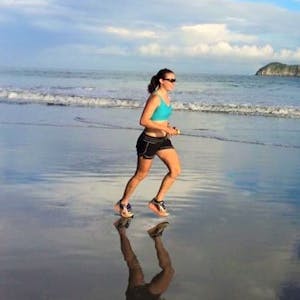
Carly Wynn
Carly Wynn is a personal coach at www.CarlyOutside.com, and can be reached at Carly@CarlyOutside.com
Jim Burnett
Whether or not your intention is to run downhill fast or slow, the key is to relax your body, enjoy the ride and let gravity do its thing. I remember running in the USATF Mountain Series National Championships at Mt. Cranmore a few years ago. It was a three-loop course and as I descended on my second lap, the leaders lapped me and absolutely flew past me. Finishing in the top three earned them a spot on the USA Team and a trip to Poland for the Mountain Running World Championships. One guy howled like a wolf at the full moon as he bounded from rock to rock, over streams and down the single track trail. He was like a superhero – fearless, invincible, agile and YOUNG (20 years old tops)! Needless to say, I was impressed and amazed. “Spiderman” was running four minutes a mile faster than me but our methods were similar just the same. We both stood pretty much straight up, relaxed our arms and shoulders and absorbed the impact of our foot strikes with our quads. The big difference was that “Spiderman” was much stronger than me and was able to spring forward taking long, bounding strides while I took short, quick steps, kind of tap-tapping my way down. I was erring on the side of caution, even coming to a complete stop at times before easing my way down through technical spots. In sections where the trail was soft, grassy and relatively smooth, I would allow myself to pick up the pace a bit. But still, I would try not to get carried away. I concentrated on staying relaxed and tried to enjoy the downhills while recovering for the next uphill pitch.
This strategy applies to road running as well. Use the downhills to relax and recover. Again, don’t lean forward, stand up straight and just go with the flow. If it’s a steep downhill, shorten your strides and quicken your cadence. You will probably have just finished an uphill climb, so run as efficiently (effortlessly) as possible. Drop your arms and shoulders and exhale. If you are wearing a heart rate monitor, see if you can get your beats per minute (bpms) down into the “easy effort” range. As you approach the bottom of the hill, ease back into your average pace and maybe even pick it up a bit to take advantage of your downhill recovery. In road races, I get passed on downhills all the time, but I don’t get passed on up-hills very often. Use the speedy downhill rabbits as targets on the up-hills. I find nothing more satisfying than burying a panting rabbit on the next uphill…Grrrrrrrrr…
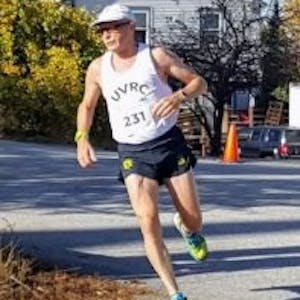
Jim Burnett
Jim Burnett is a long time runner and former President of the Upper Valley Running Club





